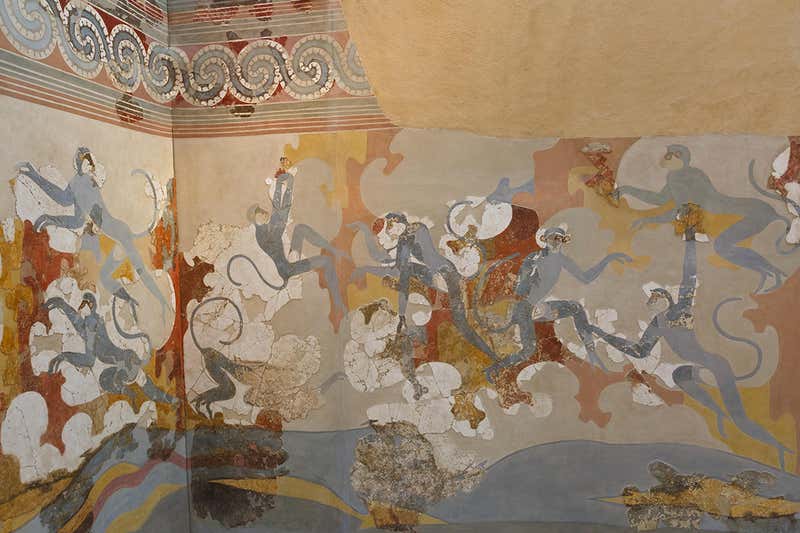Monkey from Southern Asia Identified in Ancient Greek Artwork
A painting from the Bronze Age on a Greek island depicts a monkey in Asia from a hundred thousand kilometers. The findings suggest that the trading and exchange of ideas were ancient far-distant civilizations.

The painting is one of several wall paintings in a building at Akrotiri on the Greek island of Thera (Santorini) in the Aegean Sea.
Akrotiri was a settlement in Bronze Age Greece of the Minoan civilization that was buried by ash in around 1600 BC from a volcanic eruption ..
Many of the pictures show monkeys although at that time there were no monkeys in Greece. Most of the monkeys have been identified as Egyptian species like olive baboons.
This is important because the Minoan civilization was in contact with Egypt, which extended over several Aegean islands. However, others were harder to identify.
Marie Nicole Pareja at the University of Pennsylvania in Philadelphia teamed up with primatologists to re-examine the mystery monkey paintings. One stood out. “When they looked at this wall painting, they all straight away unambiguously said ‘that’s a langur’,” says Pareja.
The team has identified the monkey as a grey langur (Semnopithecus). As well as its distinctive fur, the monkey was depicted holding its tail in a characteristic S shape.
Grey langurs live in southern Asia in what is now Nepal, Bhutan and India – and particularly in the Indus Valley.
During the Bronze Age, the region was home to the Indus Valley Civilisation, one of the most important societies of that time.
Although it was past its peak, the Indus Valley Civilisation was still advanced for its time, with large cities and elaborate water supply systems.
Somehow, the artist who painted the monkey picture must have seen a grey langur. But how?
Did Minoan Greeks visit the Indus? “I wouldn’t be surprised if someday in the future we found evidence for that kind of direct contact,” says Pareja, but right now there is none. It is also possible the visit was the other way round, but again there is no evidence.
Instead, it may be that Greece and Indus were connected via Mesopotamia, another Bronze Age civilization centered on what is now Iraq. Langurs may have been imported to Mesopotamia for menageries, where visiting Greeks saw them.
“It’s evidence of this far-reaching trade, these relationships with these far-flung areas,” says Pareja. Even in the Bronze Age, it seems there was a lot of exchange between seemingly separate civilizations.





